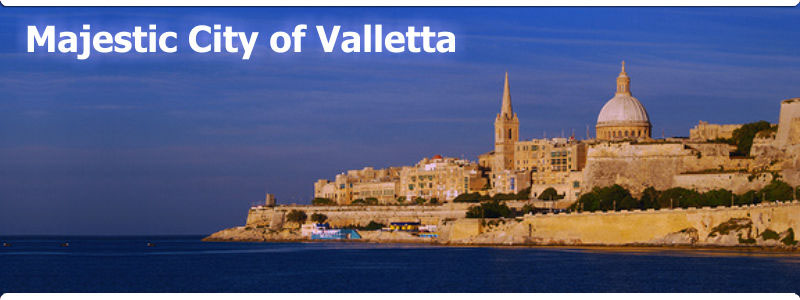| < Back to About Malta |
|
Malta is steeped in a very rich history and has been inhabited since about 5200BC, making it one of the oldest civilisations in the world. In fact Malta is home to some of the the oldest free standing buildings in the world, such as the temple of Hagar Qim. The Megalithic Temples of Malta are amongst the most ancient religious sites on Earth, described by the World Heritage Sites committee as "unique architectural masterpieces". Hagar Qim can be found close to what is today the village of Qrendi, and is thought to date from the "Ggantija phase," which is about 3600 to 3200 BC making it in excess of 5,500 years old. By comparison Stonehenge is thought to be a "youthful" 4,800 years old. The first settlers in Malta are thought to have come from the nearby Italian island of Sicily, just 60 nautical miles to the North. Later came the Phoenicians and the Greeks who named the Islans Μελίτη (pronounced "Melita") meaning "honey-sweet" in reference to Malta`s endemic variety of bee. Malta is sometimes referred to as Melita to this day. In the early 16th century, the Ottoman Empire started spreading over the region, reaching South-Eastern Europe. The Spanish king, Charles V, feared that if Rome fell to the Turks, it would mean the end of Christian Europe. In 1522, the Sultan Suleiman II drove the Knight Hospitallers of St. John out of Rhodes. They dispersed to their various prefectures throughout Europe and in the year 1530 Charles V handed over the Islands to the Knights, his intention to protect Rome from invasion from the South. From Malta the Knights resumed their seabourne attacks of Ottoman shipping, and before long the Sultan Suleiman the Magnificent ordered a final attack on the Order. This attack took place in May 1565 and became known as "The Great Siege". After a protracted siege ended on 8 September of the same year, the Ottomans conceded defeat as the approaching winter storms threatened to prevent them from leaving. They had expected an easy victory within weeks, having 40,000 men facing the Knights` meagre 9,000, most of whom were Maltese peasant soldiers and simple citizens bearing arms. Malta is a southern European country and consists of an archipelago situated centrally in the Mediterranean sea, about 60 miles to the south of Sicily. At just over 300km², Malta is one of Europe`s smallest countries. Throughout history, Malta`s strategic location in the very centre of the Mediterranean has given it great importance and a sequence of powers including the Phoenicians, Romans, Arabs, Sicilians, Knights of St John of Jerusalem, French and British have all ruled the Islands. Malta became independent from the United Kingdom in 1964 and a Republic in 1974, whilst retaining membership in the Commonwealth of Nations. It has been a member of the United Nations since 1964 and of the European Union since 2004. Malta adopted the Euro currency in January 2008. |
| < Back to About Malta |
|
|














